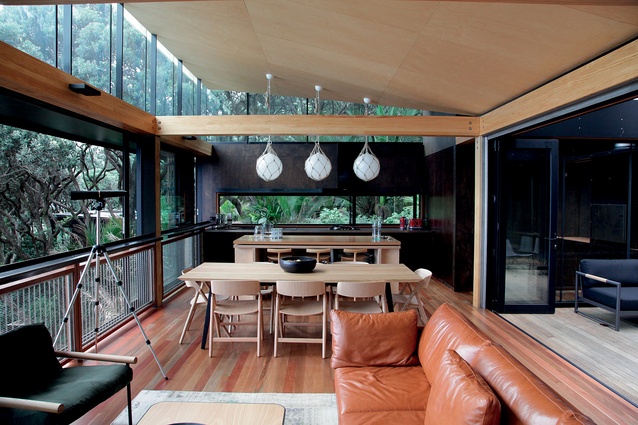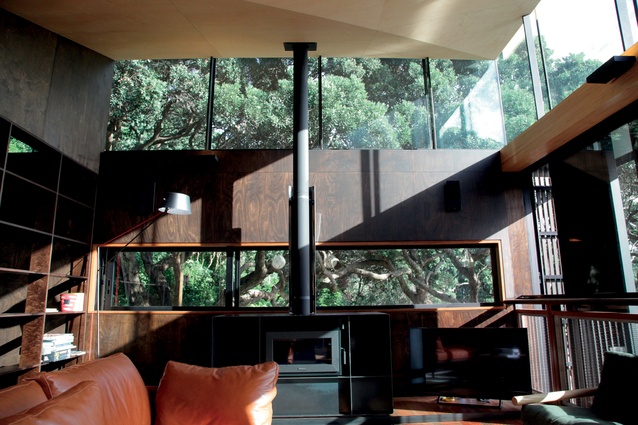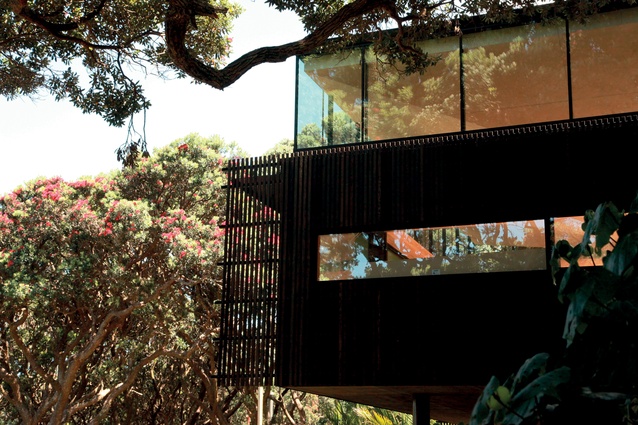2018 Sir Ian Athfield Award for Housing
With a sensitive understanding of local conditions, Herbst Architects' Kawakawa House is a Piha retreat that balances the poetry of shelter and the provision of prospect.
Jury Commentary
Richard Goldie, Andrea Bell, Amy Muir and John Melhuish
The Kawakawa House is a sensitively designed retreat that pays due respect to the wild beauty of Auckland’s west coast. Occupation must be a pleasure, no matter what the season or weather. The house connects just as well to the pōhutukawa forest in which it sits, as to the beach it overlooks. A central courtyard brings nature into the heart of the house; the effect is invigorating and inspiring.
– NZIA Citation
“Despite being in close proximity to the sea with the constant roar of the ocean as backdrop, it is very much a bush house,” says Amy Muir. “The interior responds to two different conditions. While the front of the house acknowledges the views and sounds of the sea, the rear, where sleeping occurs, directs the eye up towards the bush trough, high windows and a folded ceiling.”

John Melhuish sees it as a very serene, meditative house, not your typical Kiwi bach. “It’s beautifully controlled and built, and has a real calmness to it,” he says. “The front living space and internal courtyard that opens to the sky feel coastal but, as you retreat further back into the house, there is a Japanese quality and scale. It doesn’t want to be seen; it wants to blend into the hillside and the bush. Even the entrance process is quite intimate.”
“It’s incredibly elegant, with quite brooding and moody interiors, broken with beautiful glimpses of the bush that surrounds it,” says Andrea Bell. “It has a simple form, which includes an internal courtyard cut out of it to give shelter from the wind but also to bring light into the centre of the plan and to provide views up into the bush and the sky. Beautifully and simply detailed, it is very appropriate to its location – a place where you go to focus.”
Amy Muir says there’s a “lovely looseness” that comes from the defined spaces. “The ‘back door’ leads you into the bushland behind and the corridor space leading to the door doubles as a bunk room. This successfully allows for spaces to be used in multiple ways and highlights the difference between a home and a holiday house. We live very differently in those two typologies.”
“It’s exquisite,” says Richard Goldie. “This is a building that sits in its context extremely comfortably and, critically, it expresses the spirit of the place – the poetry of that context is really captured in the house.”
See the full list of winners of the 2018 New Zealand Architecture Awards here.
















